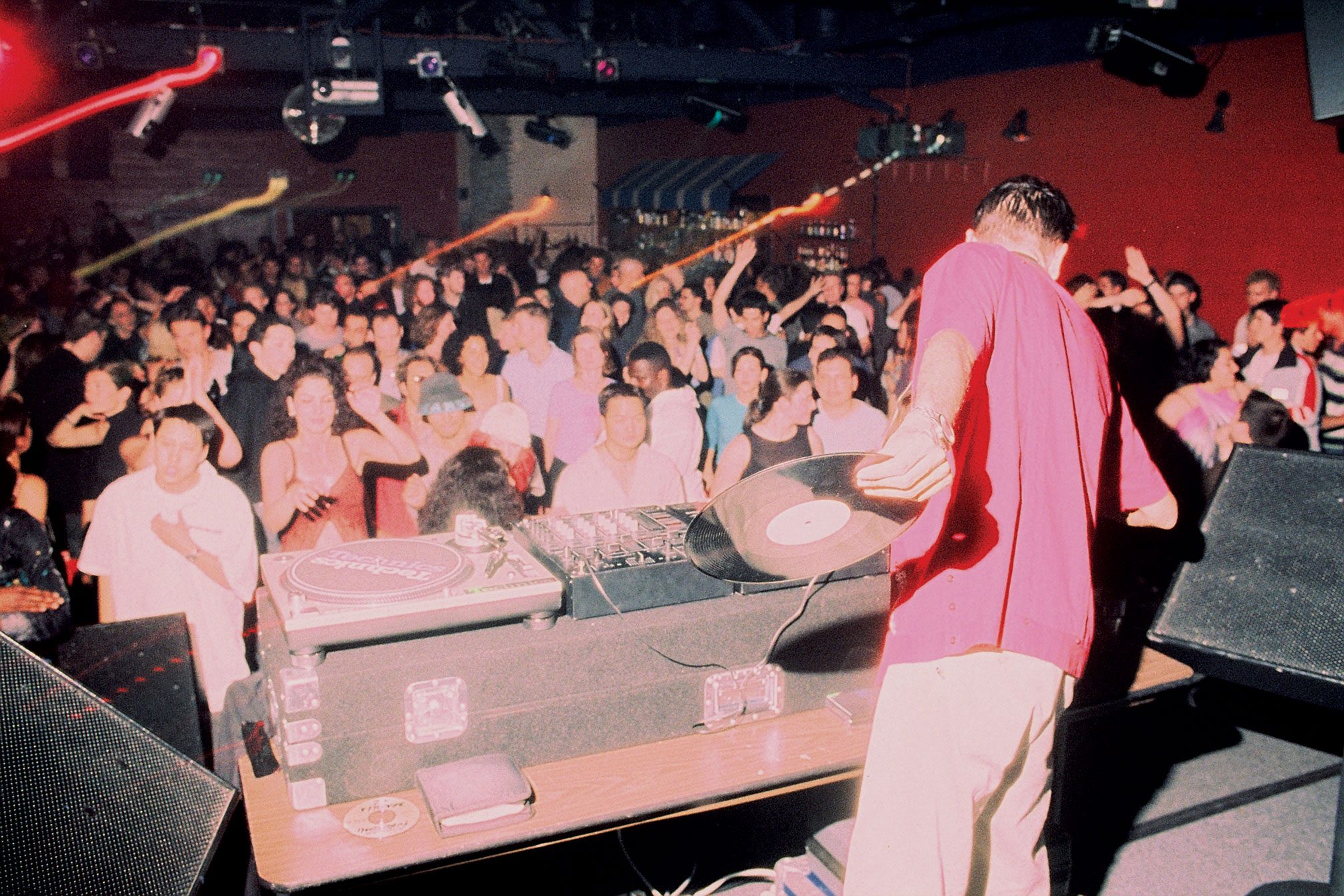 Features
Features
12 DJs talk about their favourite clubs
Have you visited them all?
1 Dimitri From Paris - Respect Is Burning at Queen
Around ‘96, the British media coined the term ‘French touch’ and a lot of the Parisian DJs were finally getting some recognition. But while the UK music press were interested in us, no-one really cared in France. The main problem was that the Parisian clubs didn’t want to book any French DJs. The DJs that were filling the clubs were all American, like Carl Craig or Derrick May. Three guys – David Blot, Fred Agostini and Jérome Viger-Kohler – noticed this and said ‘that’s not right’. So they started booking us at Queen, in Paris’s main tourist area Champs-Élysées, for a free night called Respect Is Burning.
The very first booking was Daft Punk, the second was me, and then it must have been Cassius. We all knew each other from hanging out in the same two record stores, so the scene existed before that, but the night created a home for us. Almost all of us were only playing for our friends at small evening things at the time. So even though it wasn’t a huge space – it was kind of like a dark box with an 800-person capacity – it was the first time any of us had been booked at a major club.
Queen already had a clientele of VIPs, but we would bring in a crowd of young people who just wanted to be introduced to new music. It was the mix of those kids, alongside the Champs-Élysées tourist crowd, in with a few VIPs, that made it different from anything else. It very quickly became packed every Wednesday night. And you have to remember that acts like Daft Punk were absolutely nothing to most people in ’97. The club itself was the attraction.
I remember when Stardust’s ‘Music Sounds Better with You’ was about to come out and asking Thomas Bangalter if I could remix it. The song was bound to be a hit, so the pressure for me to deliver was huge. Three weeks passed and I was about to play with Daft Punk at Respect the next night. I knew I had to do it that day or not at all. After Daft Punk played I went on and played it as the first record. It was magic. The crowd started raising their hands and screaming, and Thomas came up to me and said it was the best remix he’d ever had!
The crowd there was very receptive and I got used to that. For me now, if an audience doesn’t scream I don’t think it went well. My education with DJing comes from those nights. None of us would have been able to make a breakthrough without it. And for a good three years, there was absolutely no competition for it.

2 Honey Dijon - Café Gallery
“One of my favourite clubs out of all the places I’ve played is Café Gallery in Tblisi, the capital of Georgia. I was there two weeks ago. It was the first time I’d ever been to Georgia and I was quite ignorant about the country, as there hasn’t been much conversation about the place in terms of nightlife. As soon as I got off the plane, I felt this amazing energy. It reminded me of when I went to Berlin the first few times. The club is a café in the day and then turns into the club at night, and when I got there I bumped into Daniel Bell who had played the night before so we looked round the town, which is super charming. People like Lakuti and Tama Sumo have played at the club before so they’re bringing some serious talent to the country. There’s definitely a really good scene brewing there.
When you arrive at the club, there’s a long hallway with people hanging about smoking – a really cool crowd – and then you go up a staircase to the club. The room has a totally underground vibe. It’s really dark, there’s a long DJ booth at one end of the room with two Technics 1200s, four CDJs and a Pioneer mixer, and two big stacks of speakers either side of the booth. It’s got a great wooden dancefloor, they keeps the lighting to a minimum, and fits about three to four hundred people. I like playing to big crowds too, but it’s much easier to get a vibe in a room that size. It really reminded me of the basement parties I used to go to
in Chicago, where I grew up. I walked in and thought, this feels really familiar.
In terms of UK clubs, I guess it’s kind of like Dance Tunnel in London. In fact, that’s the best analogy I can use for the club. It’s literally a dance tunnel! The crowd really went for the more soulful and jazzy stuff I played; stuff by Masters At Work and the old Chicago house stuff, which wasn’t necessarily what I was expecting them to go for. I played for three hours and had to go straight to the airport. When I left at 6am it was still going strong. And this was on a Monday!
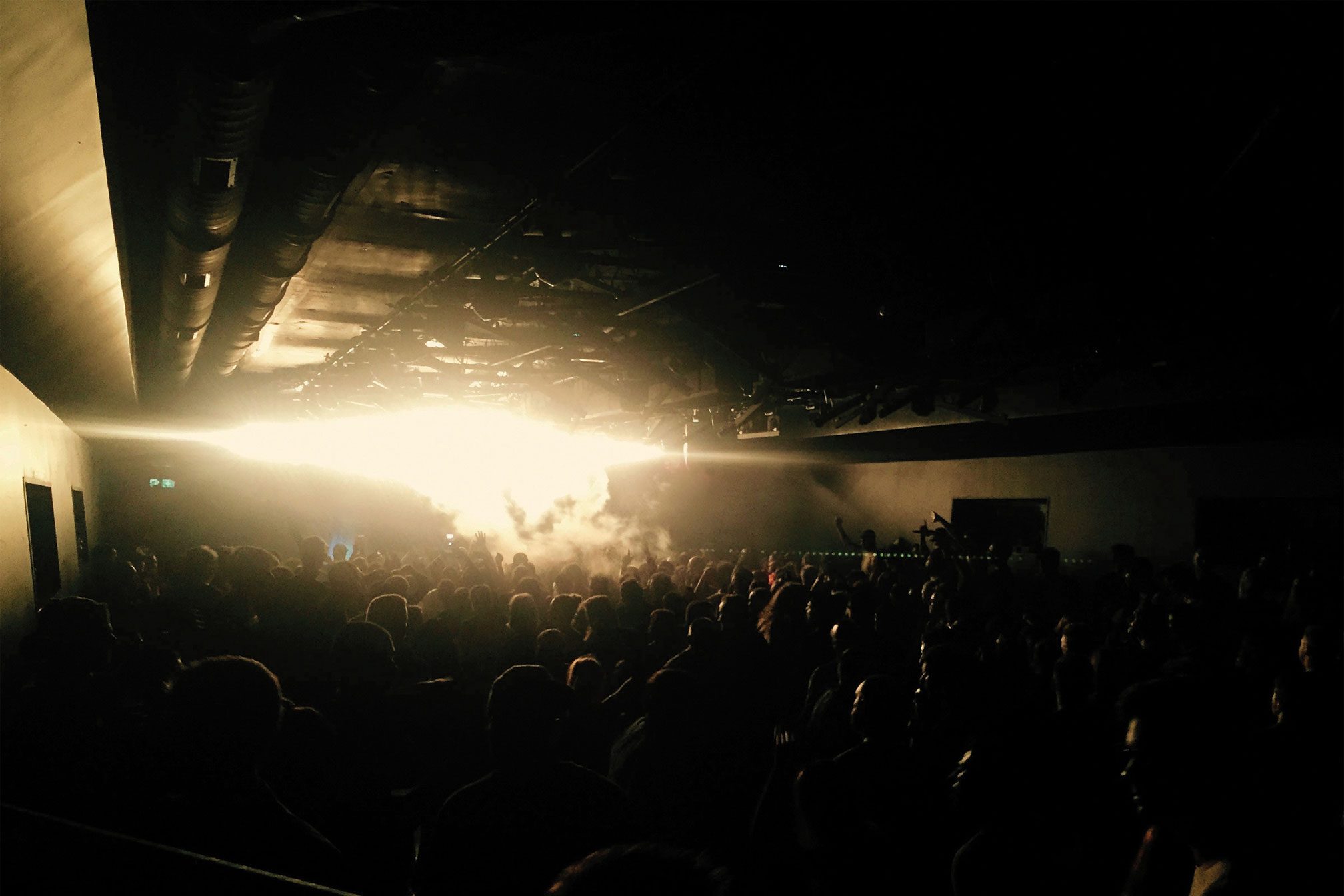
3 Andrea Oliva - Nordstern
Agi Isaku is my best friend. We grew up together and he used to drive me to gigs everywhere in Switzerland when I was 15. We would throw parties in different clubs all around the country, but never in our home town of Basel. Then, in 2008, we decided to change all that and put on a party at Nordstern. There were already a few d’n’b and techno parties there, but it was more of a location for cultural things, like book presentations and art events. All of a sudden we had the opportunity to take over the space. We stopped throwing parties around Switzerland and focused completely on Nordstern. Ardi ran the club and I was always in the basement in my studio.
The soundsystem was terrible in the beginning and we invested most of our cash in that. But the location was priceless. It was exactly what you wanted from a club: a black box with a capacity of 600 people. In the 90s we had a big techno scene in Basel, but it went downhill after that, as everything started moving to Zurich. We had to reintroduce the genre to the city. We were lucky because we had been booking DJs for a long time, so the likes of Adam Beyer, Chris Liebing and Matthew Johnson were regulars from the start. We had Carl Cox play once – in a location like that! Can you imagine? He came to the sound-check and frickin’ mixed for half an hour to no-one. All the DJs loved playing there.
At one point there were 200 cabs in front of the club every night, people were flying in from Germany and Italy weekend after weekend and bars started to move to the area where before there was nothing. The whole area became cool because of the club. We had the support of the city, the police, everybody. But all of a sudden the owner of the building said he was going to rebuild the space into offices, and unfortunately we had to leave.
We opened the new Nordstern last summer, moving onto a boat, which is amazing. We designed it to be the same as the old club – it’s pretty much a dancefloor and a DJ booth with two small bars at the front and back. People can be very nostalgic, and tend to go, ‘Ah I loved the location before!’ but we have the same quality of nights there – Carl Craig said it’s the best system he’s ever played on! We have to create the soul of the club again, but it’s worth it. For us, it’s not about just having a club. It’s about building something with our closest friends and giving something back to the city of Basel.
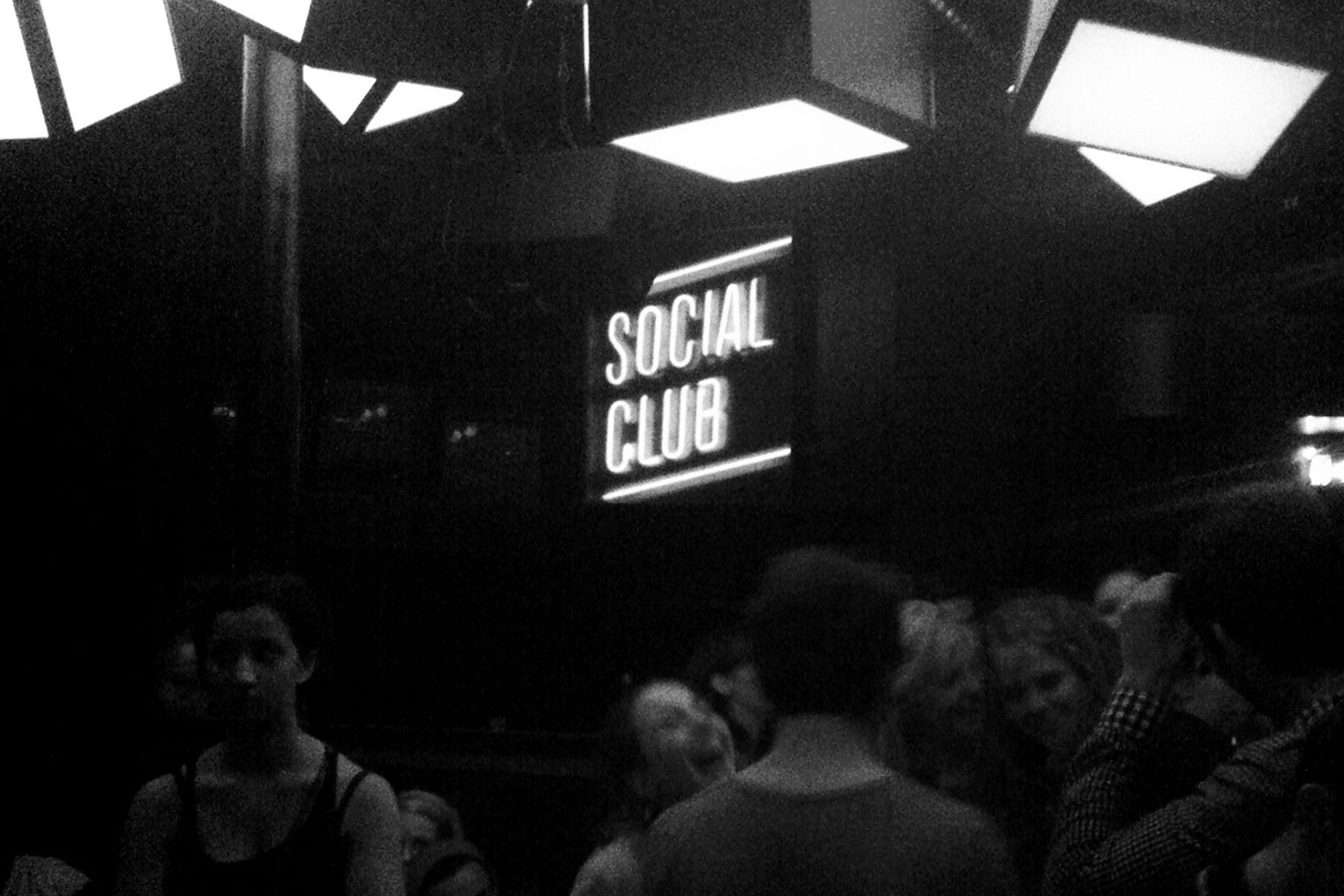
4 Louisahhh - Social Club
Paris’s Social Club was the stuff of legend. I knew so much about it before I even went to France! The Ed Banger guys – Justice, Busy P, DJ Medhi and all the Ed Banger crew – partied and DJ’d there, and Bromance and Sound Pellegrino would also turn up. Basically, every relevant Paris label was there. It was a real hub of social and creative interaction.
It was next door to Silencio, the David Lynch members-only club that was really cool and arty, but if you didn’t have the right dress code or have the card, you couldn’t get in. So people who got turned away would go to Social Club and it would just get wild. A lot of the time you couldn’t get phone signal so people were really in the moment. And because of the shape (two rooms that could be combined into one large space) there was a freedom of movement; there was a constant energy flow. It was never stagnant and never static. It was quite a young space, too. This was not about grown-up techno, this was mostly wild children raving their faces off; it was awesome. To play to a crowd that is excited about music and just has a no-holds-barred appetite, going insane in a club... it was the best, and it was like that every night.
I remember being so exhausted once because I’d missed the train and had to drive from Switzerland to Paris to warm up for Deniz Kurtel. I could barely keep my eyes open, but the reception I got from the crowd was so healing. I played the whole set with my eyes closed, but it felt like I was being physically carried through my set in the most loving way possible. It was a very transcendent thing. The music was necessary, the crowd was necessary and the rest of the night was awesome. I remember thinking, ‘Man, what a blessed thing this is’.
The energy allowed a lot of good ideas to happen as well, instead of just coke talk in the back room. Without Social Club, I’m not sure Bromance would have happened because there wouldn’t have been a hub for that dream to become reality. It was the first place I saw Maelstrom play, and we started a label together called RAAR. Teki Latex was an institution there, Sound Pellegrino had a night, and Girls Girls Girls – which was a party in Paris – had a great night there that invited a lot of women to DJ. Paris Social Club closed earlier this year and the crowd has grown up and gone to different places – but for a moment it was a magical place
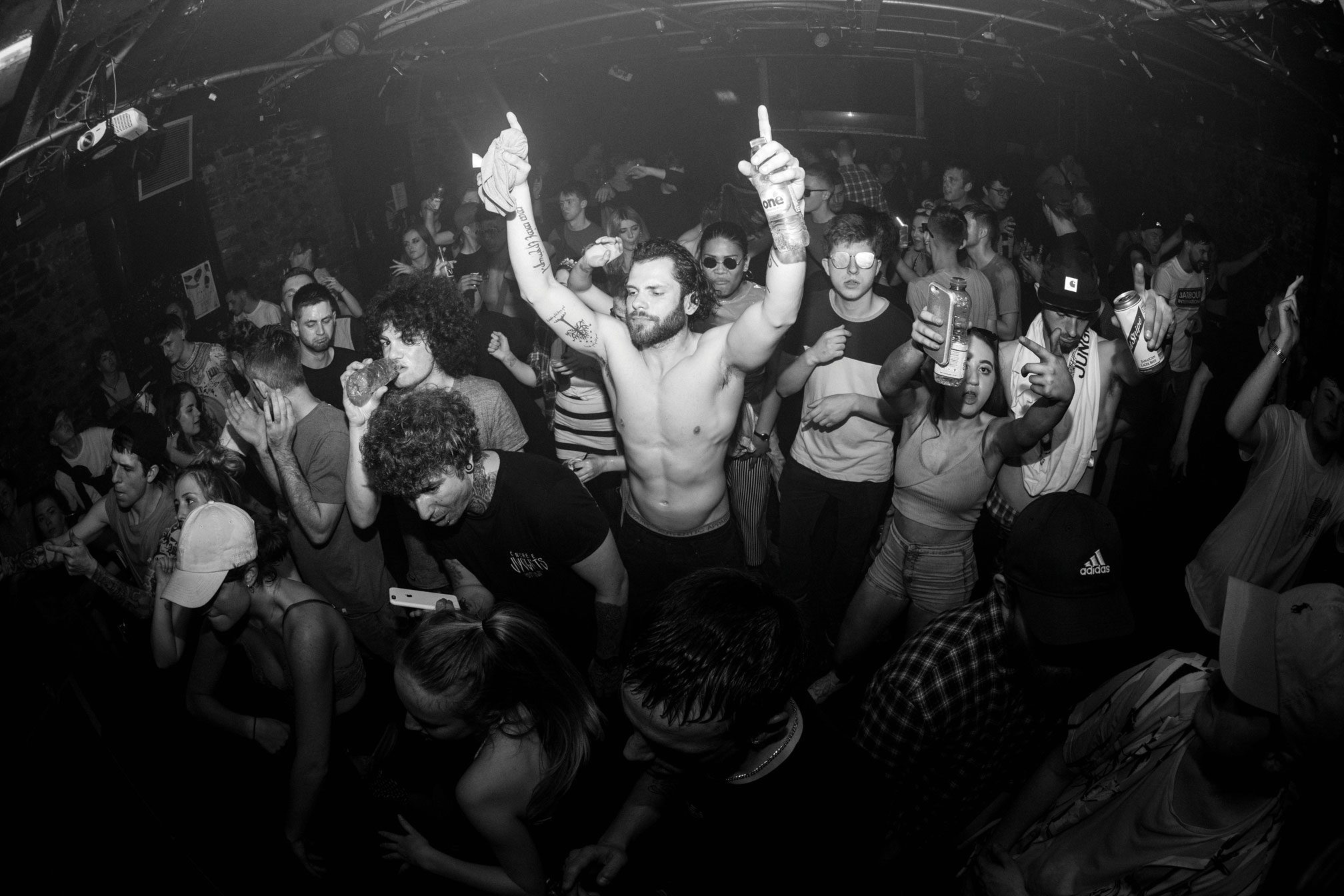
5 High Contrast - Clwb Ifor Bach
Clwb Ifor Bach (or ‘Welsh Club’ as it’s known to people from outside Wales) is one of the few remaining alternative music venues in Cardiff. It’s a legendary place and has been a vital part of the music scene in the Welsh capital for decades. I first went when I was 18 for d’n’b night Silent Running. I’d always looked too young to sneak in before that! I was the only one of my friends who really liked d’n’b so I just went by myself. It was the first time I ever heard drum ’n’ bass in a club and I quickly made friends with all the regular heads who would turn up there all the time. It was around 1998 or 1999 when I started going and I recall seeing loads of Metalheadz DJs like Hidden Agenda and J Magik. Fabio & Grooverider would play quite often and there are tracks I heard them play there that haunt me still because I never figured out what they were! After being a punter for a while I gave the promoter, Daf, one of my mixtapes and he took me on as a resident. I was so nervous the first time my hand was shaking as I put the needle on the turntable! I had one of my best DJing experiences ever there when I was warming up for DJ Marky. I’d started playing at 11pm and Marky was meant to be on at midnight, but he didn’t get there until 2am. Back then everyone played on vinyl, so I only had a finite amount of records. It was the longest I’d ever played,and it was a real test! It was rammed, there was sweat dripping from the ceiling and I could see all my friends thinking ‘Is he going to be able to hold the dancefloor for this long?’
Clwb Ifor Bach was also where I first met London Elektricity. They liked what I was playing so I told them I made tunes and it led to me being signed to Hospital. In 2007 I held the album launch party for ‘Tough Guys Don’t Dance’ there and it was such a highlight to be able to do that in my home town. I’ve been through every stage at that venue, from kid on the dancefloor to resident to headlining there and holding album launches.
Clwb Ifor Bach isn’t much to look at but it’s been a really important place for alternative music in Cardiff. You get all sorts of music there: one night you might get folk, the next it’ll be jump-up d’n’b. Womanby Street has become a focal point for music in the city with quite a few venues opening on it. It’s under threat from development, but if that happened and we lost Clwb Ifor Bach, it would be a nail in the coffin of Cardiff’s music scene.
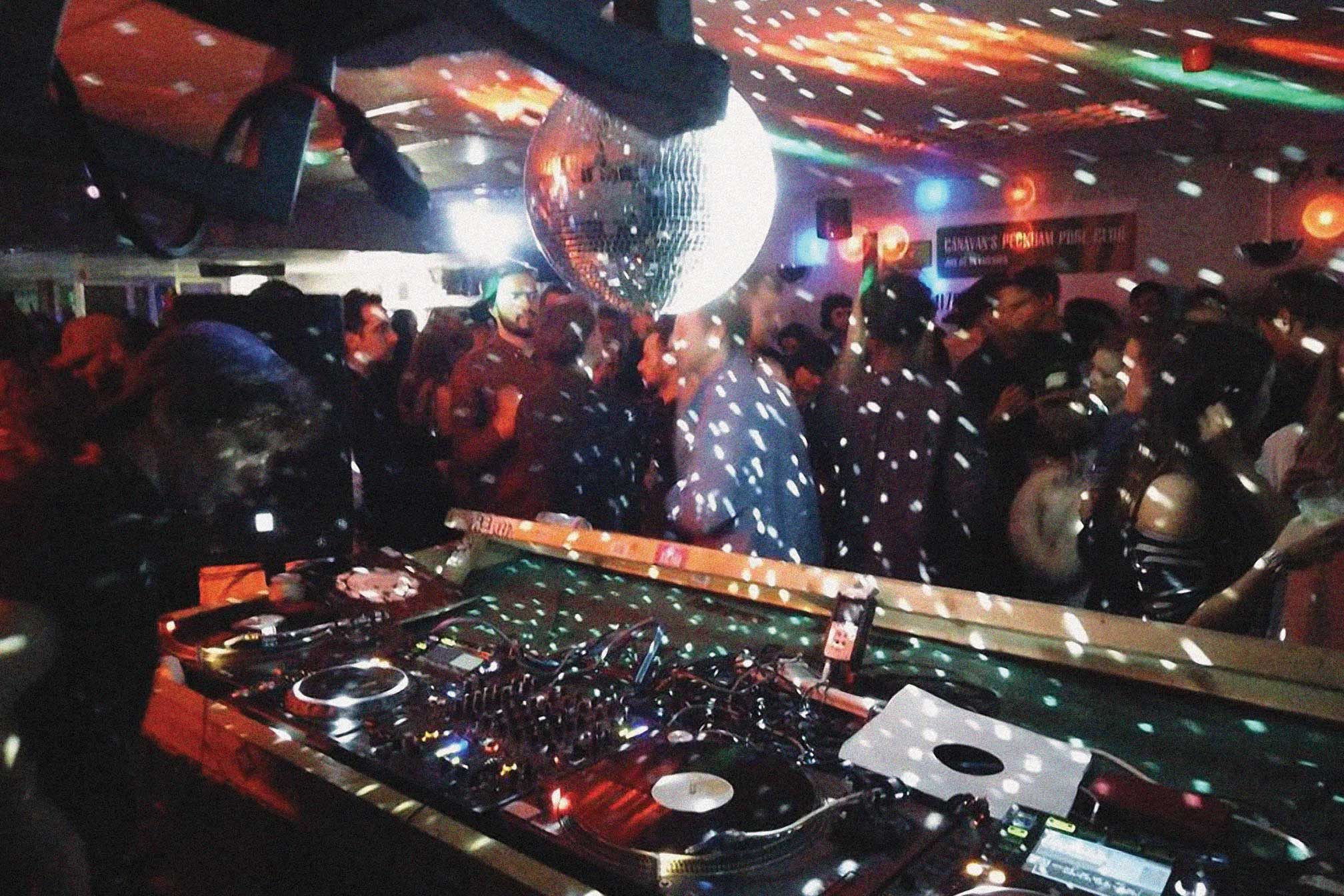
6 Nabihah Iqbal - Canavans
I remember having a lot of good times at Canavans in Peckham. It’s a pool hall where people started putting nights on
a few years back. It’s kind of weird and feels a bit like a youth club when you walk in. The first room you come to has
a bar in it and then you go through the room with all the pool tables in it. The decor’s a bit strange in there – it’s a complete 80s throwback. In terms of looks, there’s nowhere quite like Canavans but in terms of energy, there’s a club called Celeste in Vienna that really reminds me of it. I played there and everyone was dancing so hard until the end, even once the lights had come on!
I first started going to Canavans around 2011. Rhythm Section was the big night, and it had a crazy energy because everyone was really there for the music and not just for the sake of going out. It felt really different to other places in London at the time, and I think maybe that was because it’s not a place that was built to be a club. You’d see the same faces week in, week out. It had a dedicated following and community feel. I remember there always being hot guys there. The DJs at Rhythm Section were the kind of DJs that you can really watch and learn from. I remember the Severino one. That was a great night. My friends and I got down there early and were on the dancefloor all night. He played a track called ‘Twilight’ by Maze which is one of my favourite records now. While Rhythm Section was the main night that got its reputation at Canavan’s, there were other great nights on there too. I remember an Afrobeat party we went to, and one of my mates got super-enthusiastic on the dancefloor: he jumped down onto his knees and did a massive slide across the floor and took out this poor girl. It was pretty funny! The club used to feel especially intimate as there was no DJ booth and all the equipment was just set out on a table. Canavans and other places like it provide a counterpoint to the typical London club. There’s something special about taking over a space and turning it into what you want it to be, but sadly that seems to be happening less.
Peckham has changed loads over the last few years. It’s basically become the Dalston of South London and there’s a bit of a split between the local culture that’s been there for years and the new juice and coffee bars that have popped up. Places like Canavans contribute to that as it helped give Peckham a reputation as a cool place to live and go out. Rhythm Section’s moved to Bussey Building in Peckham now, which is kind of a shame; there was a moment when things were really special there.
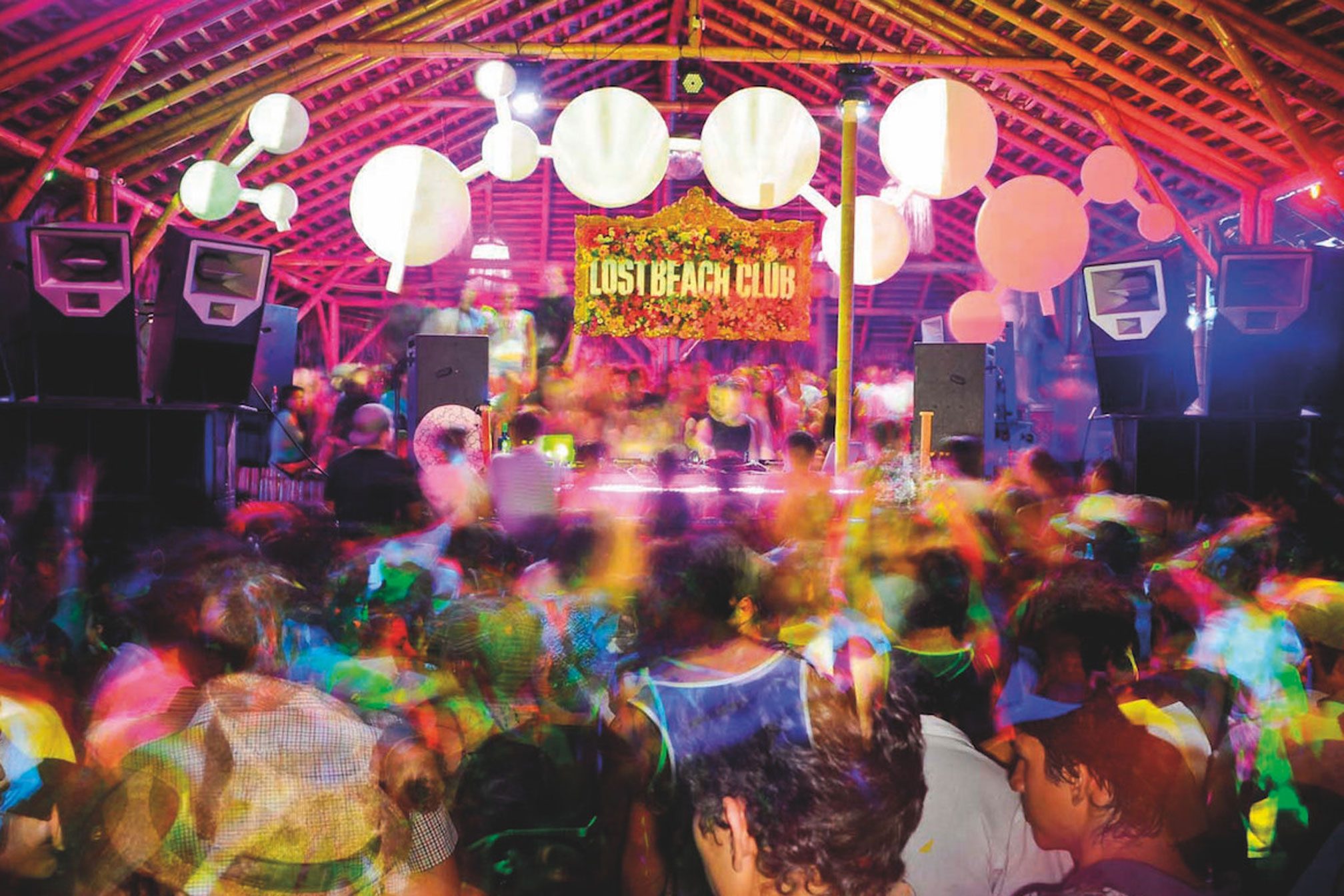
7 Richy Ahmed - Lost Beach
South America has played a big part in my career over the last 12 months; I’d say that people know me there as well as they do in Europe now. There are so many places I love playing, but my favourite club so far has to be Lost Beach in Ecuador. They’d been trying to book me for a while, and I eventually got down there earlier this year and managed to play twice during the same weekend.
It’s a massive beach club, with an open-top roof, and it has a capacity of about 2,500 people. There are tracks you’ll play in a 500-capacity venue, but you won’t play in a place like Amnesia’s Terrace because you get worried that the sound is going to get swallowed up. But it isn’t like that at Lost Beach; you can play whatever you like and it always sounds fresh.
It’s without a doubt the best sound I’ve heard in South America. There are three different dancefloors, with several other rooms to explore and get lost in, and there are Funktion Ones in every single one of them – even the burger bar upstairs has one! If anything, sometimes they need to turn the volume down; I kept thinking we were going to get shut down, but thankfully we didn’t. My first set was in the main room for four hours. Then, at about five in the morning, we moved to the second room, which is actually my favourite and more of an afterparty room. It holds about 700 people. The way it’s acoustically treated and the booth being in the perfect place makes it sound super-clear; like a studio, but loud. You could hear every little hi-hat and every little drumbeat. I played there for an extra nine hours straight, going back-to-back with the residents, but you could just go and go and go – there was no time limit.
With that sort of freedom, it’s like you own the gaff. There was no-one telling you you couldn’t smoke, no-one telling you you couldn’t do this or that. When you wanted to finish that’s when it stopped. My favourite part of the experience at Lost Beach was that I managed to stay for the weekend and played again on the Monday for a party called Ladies Night. I had the freedom to play whatever I wanted and the crowd were really receptive. I started off really deep and minimal and took it all the way to pure techno with little bits of house and disco in between. The whole place just felt a lot more open than anywhere in Europe. Even the staff were on the dancefloor by the end! They were all just going crazy at midday even though they’d been there from 11 at night.
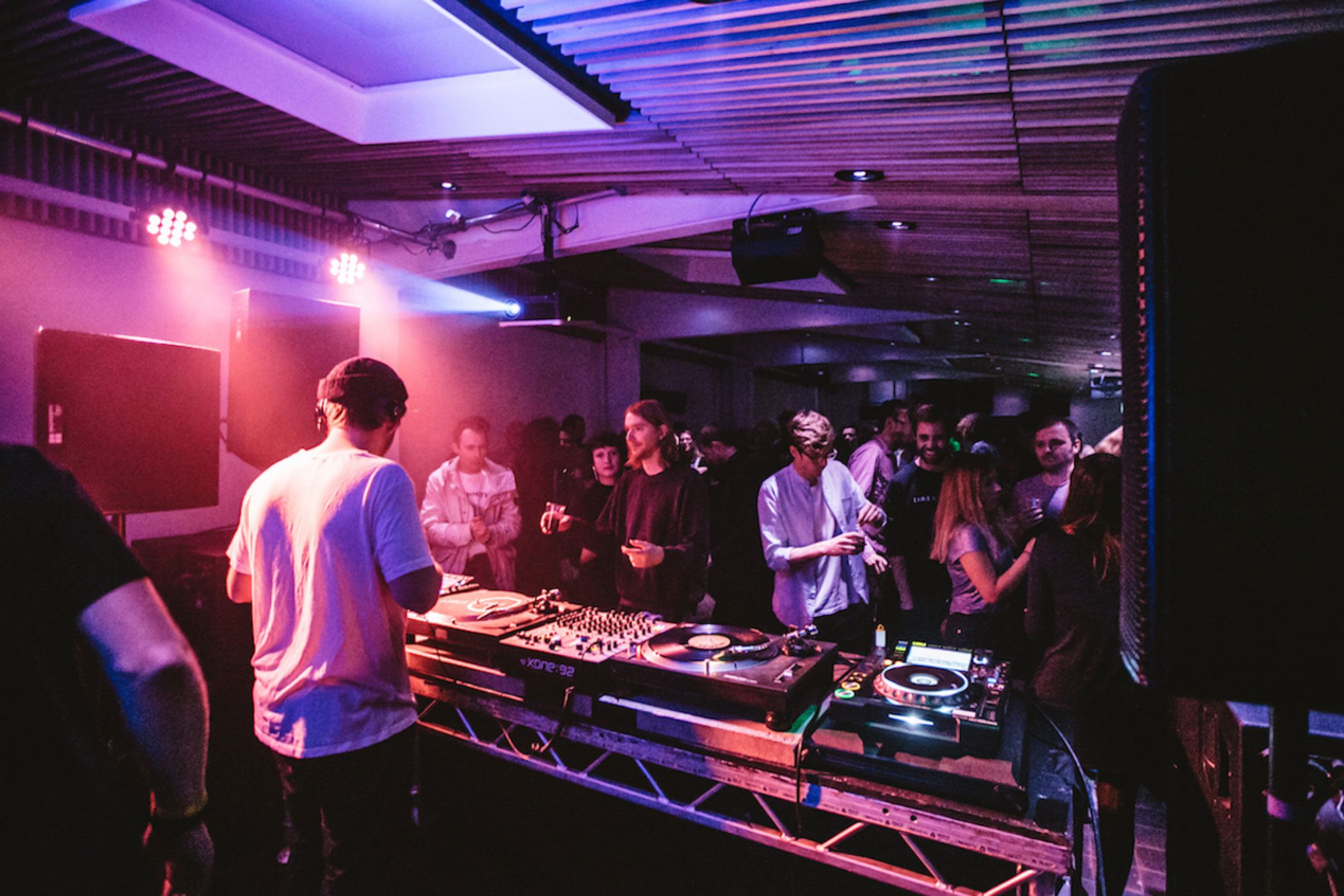
8 Moxie - The Pickle Factory
One of my favourite places at the moment is The Pickle Factory in East London. It’s opposite Oval Space and is run by the same people. I first went when it was being built and it was an empty shell. I was looking for somewhere to do my night On Loop and had heard on the grapevine that Oval Space was opening a new venue. It fits about 250 people and manages to feel both spacious and intimate. Because it’s in an industrial area slightly off the beaten track, you have to make a bit of an effort to go there so there’s always a great crowd. There’s a nice little outside area where you can smoke or chat, and one of the most beautiful, custom-made booths I’ve ever seen; real thought has been put into how it’ll work for a DJ. The ceiling is quite high and set with lights so you have the option of making it quite light or keeping it dark. I’ve seen live shows there where they’ve totally transformed it. When I do my night I bring in a massive disco ball and have loads of incense and giant balloons as that’s the vibe I want.
Places like Oval Space and Pickle Factory have demonstrated a different way of making things work. Fabric opened in the late 90s in the super-club era when you could get away with just opening on Friday and Saturday nights. Now, you have to be savvy; Oval Space and Pickle Factory do food, gigs and charity events, too. There’s a time and a place for grimy venues, and I’ve certainly spent my fair share of time in them, but for On Loop I wanted a warmer feeling so Pickle Factory is perfect.
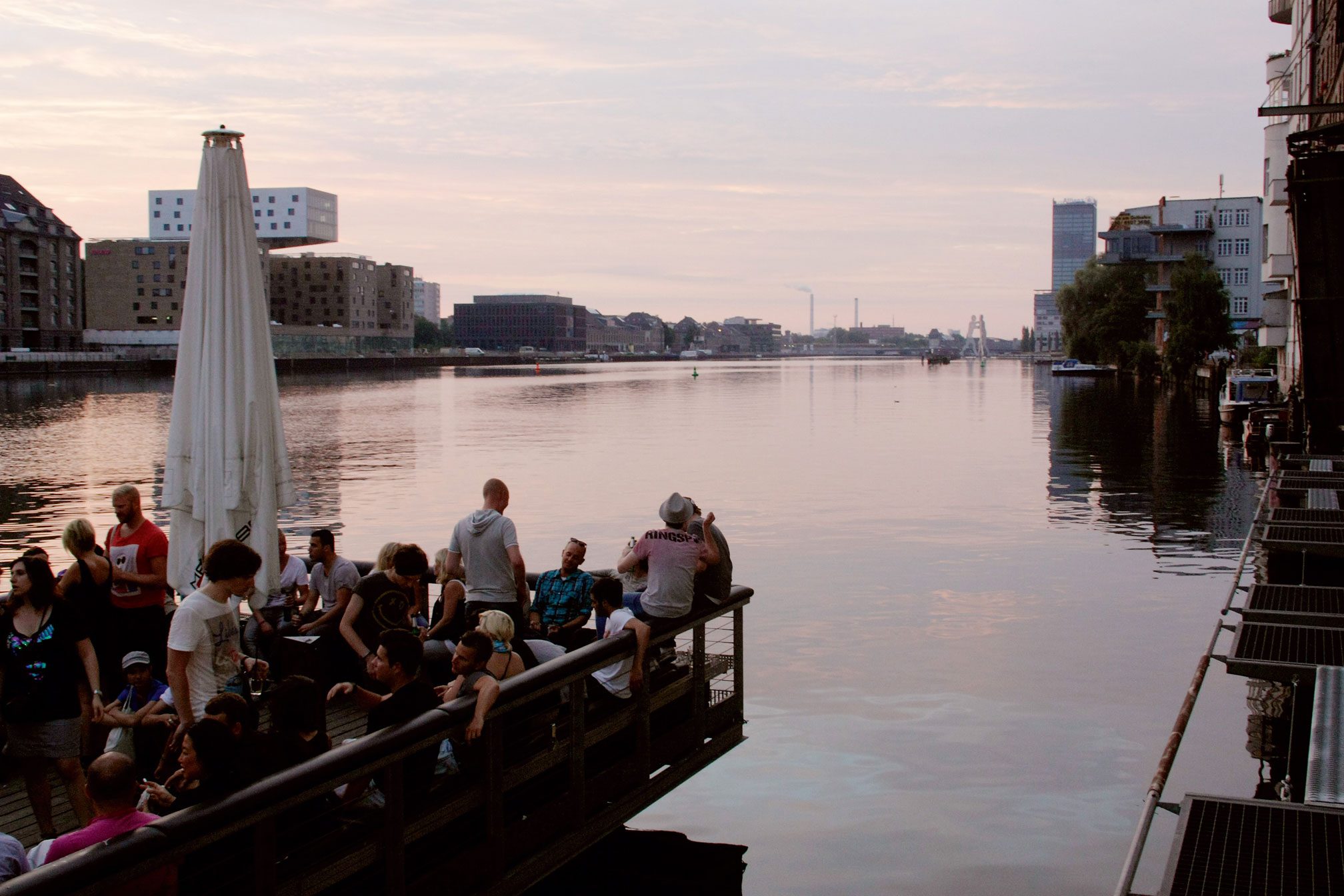
9 Artwork - Pikes
For me, Pikes is the best place in Ibiza. The owner, Tony Pike, used to be a sailor. He was in New York on shore leave and someone stopped him and asked if he was a model. When he said no, the guy said ‘Well, you’re a model now!’ He became the face of Chesterfield cigarettes and within six months his face was on billboards all over America and he was at every party with all the celebrities. He made his money, then thought, ‘Right, I’m going to go build somewhere for all these people to hide.’ He went to Ibiza and bought an old farmhouse and turned it into Pikes Hotel. By the 80s, anyone who was anyone was having wild parties there. One of the people who was always there was Freddie Mercury. He said to Tony, ‘This room is mine. Take whatever cash you need from me, but don’t ever let it out to anyone else.’ When he died they thought, ‘Well, we can’t just let it out as a normal hotel room now’ so it ended up becoming the dancefloor.
The first time I went was five or six years ago, and now I always stay there when I’m in Ibiza. It’s just mayhem. It’s never stopped being a kind of heaven for parties. There’s a huge cross-section of people on the dancefloor: people who are 20 or 21 and people who are in their 60s too. Tony Pike’s still knocking about and he’s 80-odd! In some of the big superclubs if you’re pushing 70 and step onto the dancefloor you might get odd looks, but not at Pikes. It’s just all sorts of different people who love music, want to interact and have a great time. In the day it’s very relaxed by the pool, but come nighttime it goes a completely different way. You’re greeted by Sonny who works there and will try and get you into his boudoir and and get you in fancy dress. You can’t resist! If he calls on you to get dressed up you have to do it. There’s several different areas to dance, or you can just sit on the sofas by the bar. There’s a karaoke bathtub and a wheel of fortune. Seth Troxler does his birthday party there every year; he takes it over for two or three days with all his friends. When I do Art’s House, I DJ all night and can play stuff I couldn’t really play elsewhere. Harvey’s Monday night party is just incredible. He’s so at home there – it’s a completely different experience to seeing him in a club. I’ve been there when the room’s been going completely mental at 2am and he’ll play a ballad, play an even slower ballad and then an even slower one! He’ll clear the floor; I’ll look at him and say, ‘What are you doing?’ And he’ll say, ‘They need a rest, let them go and have a fag.’ Then he’ll build it up again. Pikes really is unique. I’ve never come across anywhere else quite like it.
Edit: Tony Pikes passed away after this article was published

10 La Fleur - Watergate
The first time I was in Berlin, in 2006, a friend took me to all the clubs you had to see in the city and Watergate was one of them. Then when I moved to Berlin in 2007 I started going a lot more. Watergate is situated on the Spree River in Berlin and as you enter, you see the main room floor with a wall of LED lights. Watergate’s lighting has been copied a lot around the world! Then downstairs, there is the ‘water floor’, which is my favourite, with all glass windows facing the Spree.
The capacity is 600, but it feels bigger because the floors have completely different vibes going on. The main floor is more full-on, while downstairs has a more intimate feeling. I’ve had some magic moments playing there, especially after-hour closing sets; there are so many smiles, people cheering, and a real feeling of togetherness with everyone in the room. For two summers I held down a Thursday night residency at a party called Thursdate that was only open on the water floor. I’d play the warm-up, a guest DJ would play for two hours, then I would play the closing. You always got the whole feeling of the night and I loved that. It’s truly special being at the club in the morning when the sun comes up; there are not many clubs that have such a beautiful view.
When my friend and fellow DJ Michelle Owen and I wanted to start our own club night we contacted Watergate about doing it there in 2012. We did four nights and booked Anthea, Joyce Muniz and Lilith among others. Then they asked me to have a meeting. I thought they wanted a remix or something, but they actually asked if I wanted to join their agency and I started as a resident for them in 2013. Since then, I’ve played with the likes of Dixon, Catz n’ Dogz and Sven Väth – all amazing experiences – and in February, I finally got to play with Sasha who is an amazing DJ. We’d been in touch for quite some time, and he’d supported a lot of my music, so it was great to finally play together.
Watergate is also a record label, which started in 2008, and my first release on it was the ‘Nightflow’ EP. For me, who otherwise wants to do everything myself, Watergate is a really nice family to be a part of. Watergate is an institution in Berlin. The people who started the club are DJs, they’re into music, and you can really tell that. They’ve been around for 15 years now – for something to have been around that long shows they’re doing something right! They run Watergate with their heart on the right side of music.
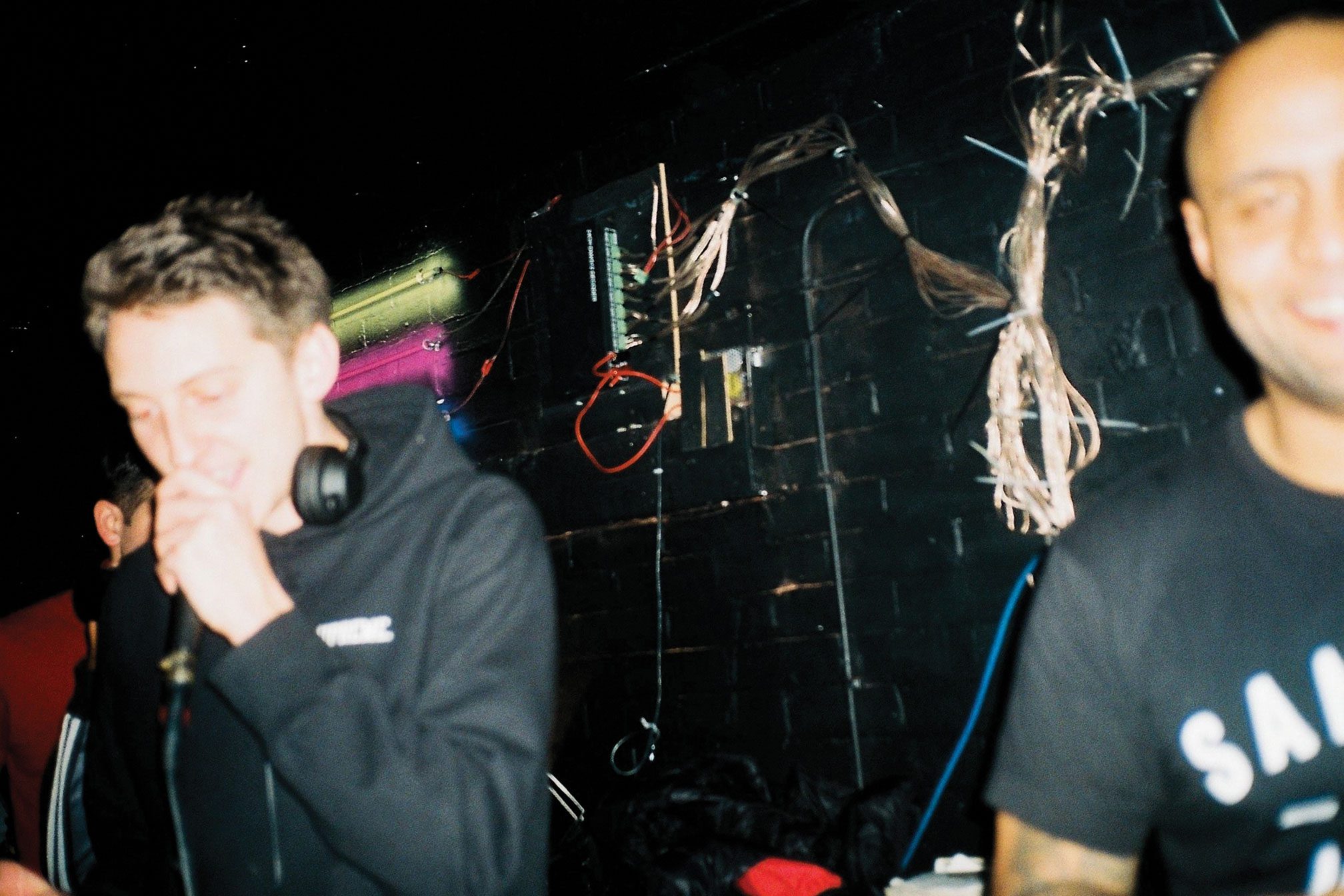
11 Toddla T - Kabal, various venues in Sheffield
Kabal started in 2000 and used to pop up in all sorts of disused spaces in Sheffield.It was one of the first raves I went to in the early noughties. Before that, I was a hip hop nerd in my bedroom, but Kabal opened my eyes to the electronic and dance music scene. It was a mad melting pot of sounds and it blew my head off!
Kabal was a very special rave because it was unique to Sheffield. You had hardcore upfront Jamaican music next to the most mental electronic stuff coming out of the UK, uncompromised dubstep and grime all in these mad spaces.
The first time I played Kabal was in a disused chapel in 2005, with DJ Pipes and Winston Hazel. We all played different styles of music which were rooted in the same sound. There were weird Jamaican influences in everything we played.
DJing at Kabal formed who I am today, musically. Even when I started DJing around the globe and my personal career took off, I always found the time to get back to Sheffield to play a set because I loved it so much.I played in a steelworks, a disused morgue, and even a post office. Venues like that made it feel more open to everyone. It was a place for people from all different races, backgrounds and sexualities to rave together and not feel like they had to fit in.Everyone respected each other, but if you saw them in the street you never would have thought they would rave together.
There weren’t that many people that had heard of Kabal and one of the reasons was because it wasn’t promoted. It was for an intimate crowd that really appreciated and understood the music and the vibe. Whacking posters around the city would have turned it in to something else. We didn’t really want to book other DJs, either, because we had such a refined sound. Local DJs understood what we were about and would deliver better stuff than more established DJs probably would have. We didn’t really want people turning up for two hours, not knowing what we were about and doing their own thing.
Unfortunately, everything runs its course and Kabal got to a point where it peaked and we didn’t want it to fall off, which is why we ended it. At the last party, Róisín Murphy guested. Blasting her voice through the speakers was a real moment. She really got what we were about. No matter how big you get, we’re all cut from the same cloth in Sheffield, and that lineage runs through all our music.
I wouldn’t say Kabal was better or worse than any other rave, it was just its own thing. I’ve been to raves all over the world and I love the unity they bring, but no one did it quite like Kabal. The combination was unique, and I miss it sorely.
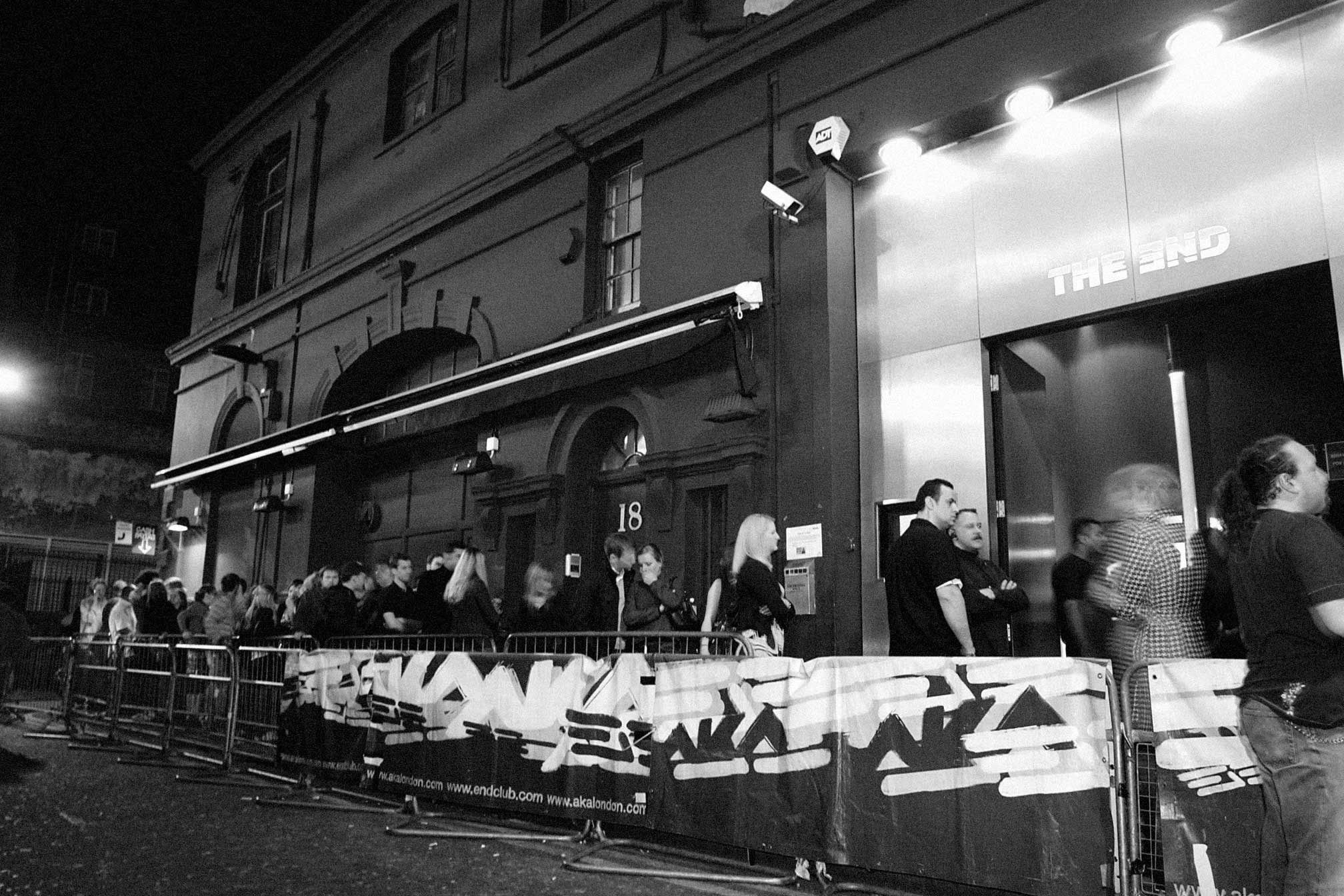
12 Mr C - The End
A few years before The End opened in 1995, Layo from Layo & Bushwacka! told me about a space his dad, the architect Douglas Paskin, had been commissioned to work on. It was three underground tunnels which had been used as part of the post office service. The ceilings were low and you couldn’t see how you’d get from one tunnel to the next, but it had potential.
Clubs in London back then were either big, glitzy spaces like Camden Palace or small places that weren’t run properly. We wanted to do it differently. We put in a sprung dancefloor so your legs wouldn’t get sore, aircon so you weren’t hot and sweaty, a water fountain, and the best soundsystem in the world.
The first night, in 1995, was incredible, an invite-only industry party called ‘The Beginning’ with Stacey Pullen in the main room and Chez Damier and Ron Trent in the lounge. We gave away £30,000-worth of booze that night! We wanted The End to be underground, so it took time to take off. London’s under-ground crowd were used to going to illegal warehouse parties, so it was hard at first to get them into a club. We nearly went bankrupt in the first year, but by the second year, the city got it.
We did d’n’b and breaks on a Friday, house and techno on Saturday, and DTPM, our gay night, on Sunday. Subterrain was our monthly, flagship house and techno night and I was resident, with Layo & Buschwacka! in Room 2. When Fabric opened in 1999, they did d’n’b and breaks on Friday and house and techno on Saturday, like us, and they poached DTPM. But it was great for London and gave us a kick up the arse to do things differently. We ended up opening seven nights a week and had parties like Erol Alkan’s night Trash on a Monday which was ahead of its time.
But we kept on being pressured by a developer who wanted to build above The End. We resisted for ages, but in July 2008 he offered us eight years of profit, based on what we had made in our best year. It was a no-brainer: work our bollocks off for eight years and maybe make that money, or take it and invest our time in other things. A month later the property crash happened, so we got out at the right time!
The best night of all was the closing party. We opened from 5pm on Saturday January 23 2009, and shut at midnight on the Sunday. People queued for hours; they danced like they’d never be able to dance again, and cried on the dancefloor. In its time, The End was the best club in the world – and I don’t say that lightly. We were a well-oiled machine, constantly switching it up and improving. It just would have just got better and better, but stopping when you’re at the very top? There’s a beauty in that.


